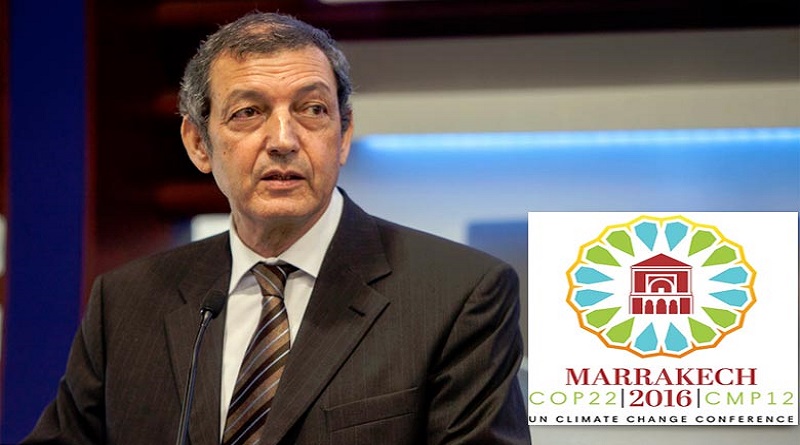COP22: Forest leaders showcase efforts to deliver on Paris Agreement, SDGs
Leaders in the global drive to protect, restore and sustainably manage forests announced today  a series of measures that show concrete progress is being made towards delivering on the Paris climate pledges and global Sustainable Development Goals (SDGs).
More than a dozen initiatives from Africa to Indonesia to South America are demonstrating how climate mitigation and adaptation actions related to forests and agriculture are firmly anchored in the Nationally Determined Contributions of over 120 Parties to the Climate Convention.
The announcement also comes only two years after the New York Declaration on Forests, an ambitious multi-stakeholder commitment to cut deforestation in half by 2020 and striving to end natural forest loss by 2030.
Forest Action Day at the Marrakech Climate Change Conference (COP 22) is part of the Global Climate Action Agenda, an initiative by France and Morocco to boost cooperative action between governments, cities, business, investors and citizens to cut emissions and help vulnerable nations adapt to climate impacts and build their own clean energy, sustainable futures.
High Commissioner for Water, Forests and the Fight against Desertification of Morocco, co-organizer of the event, Abdeladim Lhafi, stated, “Conserving, restoring and managing forests is essential to meeting global sustainable development goals, including combating desertification and water security.
“That is why the Moroccan government is announcing a new initiative “Strengthened Action in Favor of Forests in the Mediterranean-Sahel Region in the Context of Climate Change†(AFMS) to help countries meet multilateral commitments to forests, including the adaptation and mitigation actions under the Paris agreement, and facilitate climate change investments to Improve forest management and build the resilience of forest-dependent communities. .â€
Administrator of the United Nations Development Programme (UNDP), event co-organiser, Helen Clark, said “Forests are one of the largest and most cost-effective responses we have to climate change.
“Countries, civil society, the private sector and indigenous peoples are working powerfully together to protect forests to limit global warming to below 2°C above pre-industrial levels, in line with the goals of the Paris Agreement.â€
Healthier forests will not only help combat climate change but also contribute to many other global development goals by providing food, income, fuel and shelter, said René Castro Salazar, Assistant Director-General, Forestry, of the Food and Agriculture Organization of the United Nations (FAO), which also co-organized the event.
“The Zero Hunger goal of the SDGs cannot be achieved by 2030 without addressing climate change, and climate change cannot be addressed without managing the world’s forests in a sustainable manner,†he said.
Deforestation and forest degradation currently contribute up to 12 percent of carbon emissions – more than the entire transport sector combined. Yet, by halting deforestation and reducing and reversing forest degradation, forests could contribute significantly to the climate solution in the coming decades.
More than a dozen announcements were made at today’s session, including:
Moratorium on Indonesian Peatland Clearing: The Government of Indonesia announced it is implementing a moratorium on clearing super-high-carbon intact peatland. Today’s action builds on Indonesian President Joko Widodo’s announcement at last year’s Forest Action Day in Paris, to end new and review existing peat concessions.
Forest Planning for Peace in Colombia: Over the past three years, deforestation has been reduced by 50% below the average during 1990-2010. Now, linked to the peace process, Colombia has announced plans to close the forest frontier as a key component of a post-conflict future. Efforts include focusing development on non-forest lands, implementing strong tenure reform, and placing very large areas of forest under indigenous peoples’ control.
African Leadership on Sustainable Development: The public-private partnership Tropical Forest Alliance 2020 announced the African Palm Oil Initiative, a new regional declaration of principles charting a path for responsible development of this commodity in one of its fastest-growing producer regions. Through this initiative, African governments at the highest level have committed to learning from and avoiding the serious deforestation caused by the palm oil sector in Asia.
In addition, the Central African Forest Initiative, which includes six central African high-forest-cover countries (Cameroon, Central African Republic, Congo, the DRC, Equatorial Guinea, and Gabon), has taken a major step since COP21 toward the implementation of sustainable development frameworks in the region through the signing of a $200 million Letter of Intent to support REDD+ and responsible and inclusive development investments.
Brazilian Transformation: Brazil’s Forest Code is a concrete tool for avoiding illegal deforestation, increasing and consolidating forest conservation, management and restoration processes in the field, and adding sustainable value for Brazilian agriculture and cattle (both on domestic and international level). The multi-stakeholder Produce, Conserve, Include (PCI) strategy in Mato Grosso, Brazil, will simultaneously reduce deforestation in the Amazon by 90% by 2030, increase agricultural production and promote socioeconomic inclusion of smallholders and traditional populations.
Breakthrough Technology for Transparency: A new partnership between FAO and Google has created Collect Earth, an open-source tool that provides access to large collections of free, high-resolution satellite imagery and cloud computing. This enables countries to produce fast and cost-effective land use and land-use change estimates, thus increasing the accuracy of the emissions-reduction estimates from deforestation and forest degradation and improving the reliability necessary for performance-based payments. A recent assessment of the global drylands by Collect Earth revealed the existence of 1.11 billion hectares of forest land – 27% of worldwide forest cover – and 13.5 billion trees outside forests in the world’s drylands. So far over 700 national experts have been trained to use Collect Earth in over 30 countries, which will help them to contribute to the implementation of the Paris Agreement.




